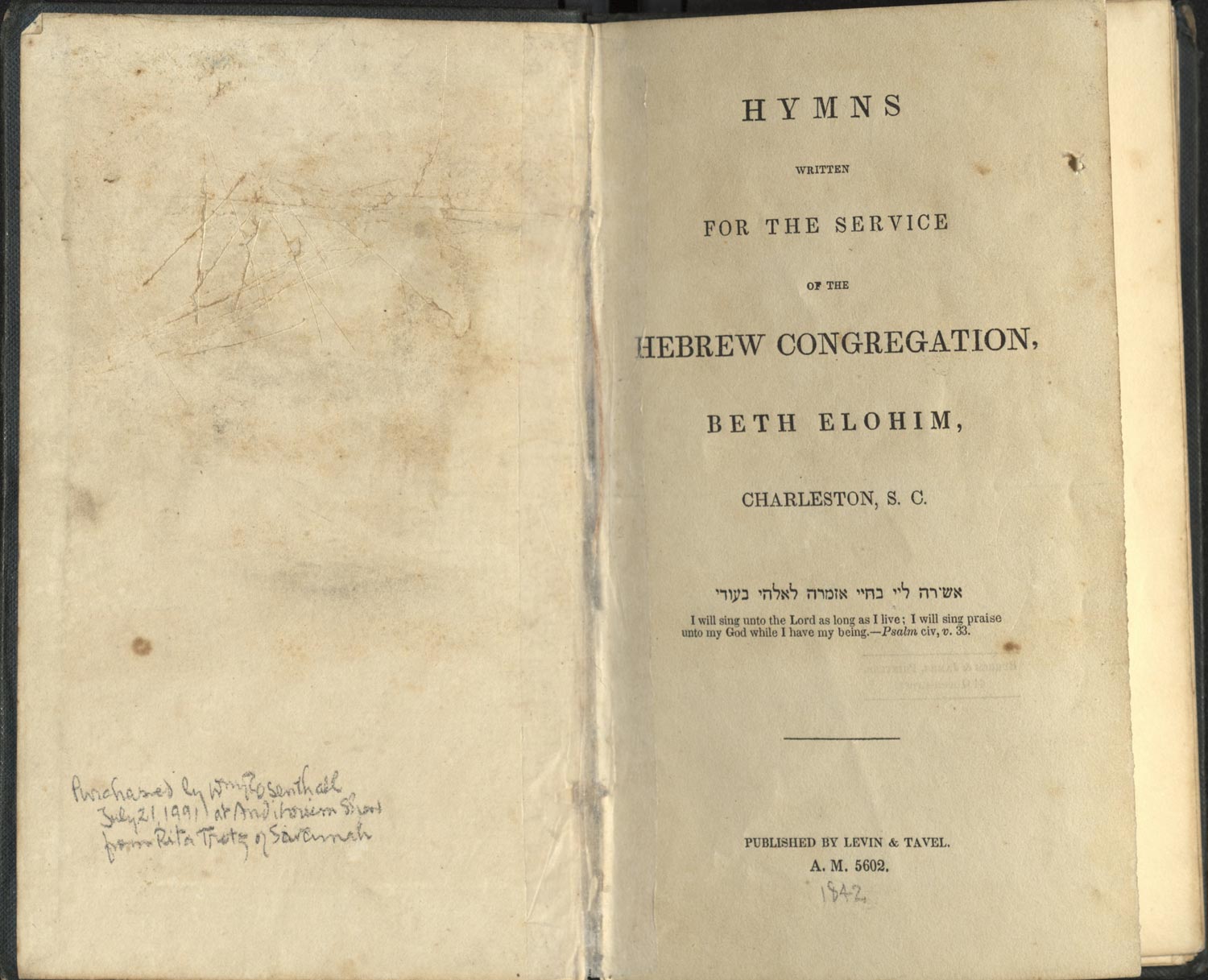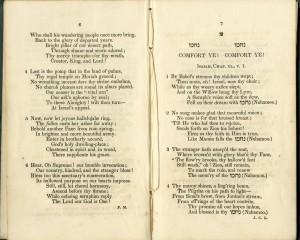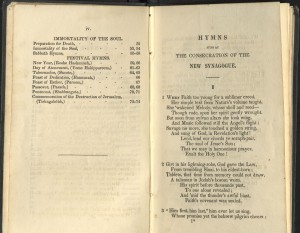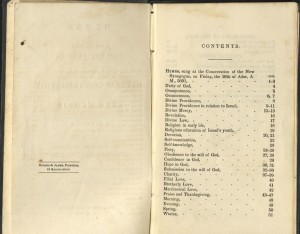Though synagogue dedications mostly followed an established liturgy, new poems, hymns, and other music were often composed and performed to celebrate the event. In 1839, poet Penina Moïse (1797–1880) wrote verse for the dedication of Kahal Kadosh Beth Elohim’s new temple in Charleston, South Carolina, an impressive Greek Revival building that replaced an earlier synagogue consumed by fire. Her poem, printed here in the volume Hymns written for the service of the Hebrew Congregation Beth Elohim, Charleston, S.C. (1842), was sung by the choir. One verse in particular alludes to the loss and rebuilding. The lines also refer to the name of the synagogue, Beth Elohim (House of God), and reflect a popular sentiment among American Sephardi Jews that they were a chosen remnant, their Judaism saved and revived in America:
Now, now let joyous hallelujahs ring,
The fallen casts her ashes far away;
Behold another Fane from ruin spring,
In brighter and more beautiful array.
Enter in brotherly accord,
God’s Holy dwelling place;
Chastened in spirit and in word,
There supplicate his grace.
Moïse wrote the lyrics for the majority of hymns in the hymnal, the first of its kind in America. She was the sixth of nine children and the youngest daughter born to Abraham and Sarah Moïse, who fled from a slave rebellion in St. Domingue and settled in Charleston, South Carolina, around 1791. Moïse was encouraged in her poetry by her brother Jacob and sister Rachel, and her work appeared in both the Jewish and general press. Her 1833 collection of poems, Fancy’s Sketch Book, was the first book of poetry published by a Jewish American woman. Throughout her life, Moïse wrote 190 hymns, many of which remained popular throughout the 19th century; the Reform movement’s 1932 Union Hymnal still contained 13 of them.



